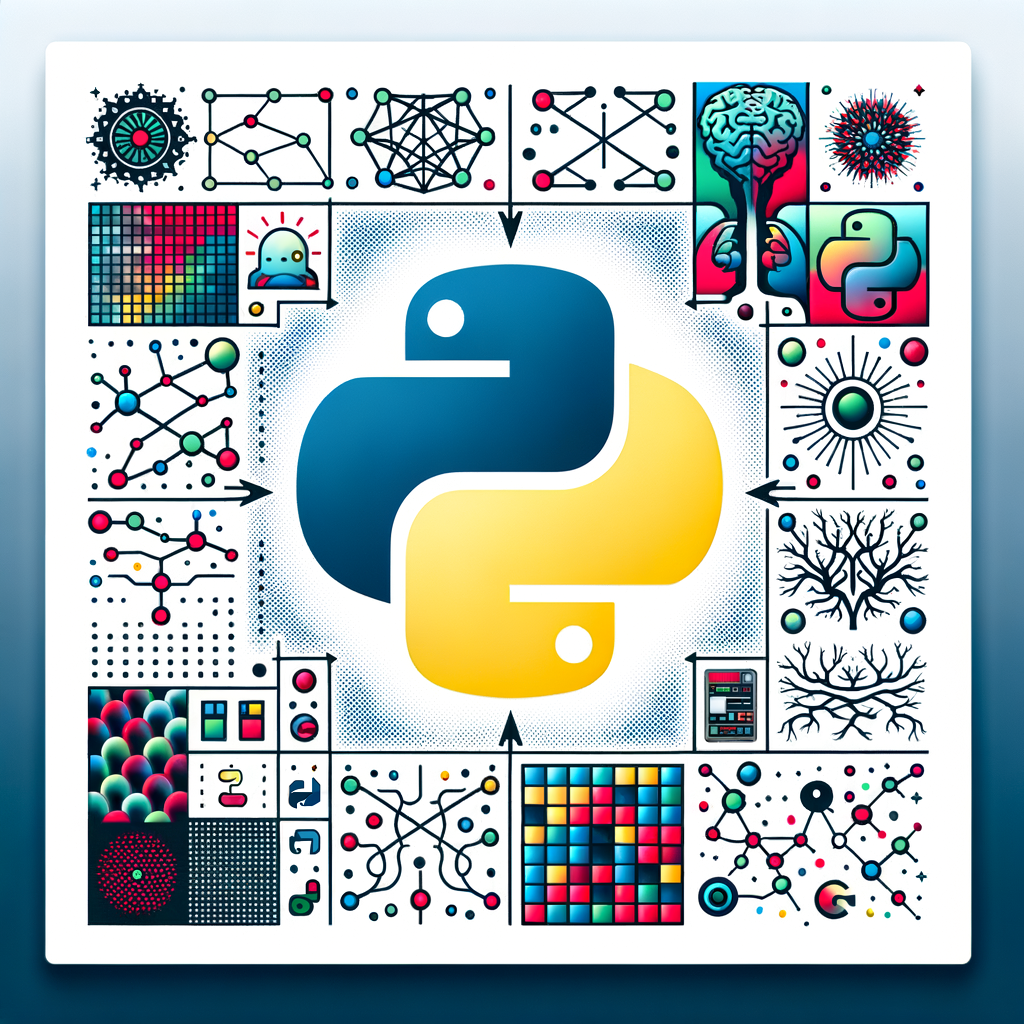
From Code to Consciousness: How Python Powers Artificial Intelligence Evolution
Delve into the fascinating journey of how Python programming is shaping the landscape of artificial intelligence. This article explores the pivotal role Python plays in developing AI technologies, enabling breakthroughs in machine learning, deep learning, and beyond. We'll navigate through Python's ecosystem, its libraries, and its ability to model cognitive processes, making AI not only smarter but also more intuitive and adaptable. Discover the tools and techniques empowering developers to push the boundaries of AI capabilities.
From Code to Consciousness: How Python Powers Artificial Intelligence Evolution
Python has long been celebrated as a versatile and user-friendly language, making it a preferred choice for programmers across various domains. In the realm of artificial intelligence (AI), Python's straightforward syntax and powerful libraries have pioneered advancements and opened doors to innovative solutions. As AI continues its transformative march, Python remains at the forefront, enabling developers to conceptualize, build, and refine AI systems with increasing sophistication.
The Significance of Python in AI
Python's simplicity and readability are crucial in AI development, allowing developers to focus on solving complex problems rather than grappling with the intricacies of syntax. Its extensive library support accelerates development processes, providing ready-made tools for data manipulation, scientific computing, and machine learning—key components in building AI models.
Standard Libraries Leading the Charge
Python comes with a vast array of libraries that simplify AI development. Libraries like NumPy and SciPy provide essential functionality for array manipulation and scientific computing. Pandas offer powerful data manipulation capabilities, enabling developers to manage datasets efficiently. Matplotlib and Seaborn contribute to data visualization, making it easier to understand model results and performance.
Machine Learning and Deep Learning Libraries
Machine learning and deep learning are at the core of AI's rapid progress. Python facilitates these with libraries such as Scikit-learn, TensorFlow, and PyTorch. Scikit-learn supports learning algorithms and data preprocessing, while TensorFlow and PyTorch provide deep learning frameworks essential for creating neural networks. These libraries democratize AI development, making it accessible even to those with minimal programming experience.
Scikit-learn: Simplicity Meets Power
Scikit-learn is known for its simplicity and efficiency in data mining and data analysis. It offers a consistent interface for a wide range of machine learning algorithms, making it an invaluable tool for supervised and unsupervised learning tasks. The library's integration with other Python libraries enhances its applicability across diverse projects.
TensorFlow and PyTorch: Titans of Deep Learning
TensorFlow, backed by Google, and PyTorch, developed by Facebook, are dominant players in the deep learning landscape. Tensorflow's comprehensive ecosystem accelerates model deployment and scalability, while PyTorch's dynamic computation graph allows for more flexibility during model definition and execution. Both frameworks support complex neural networks, driving advancements in computer vision, natural language processing, and more.
Beyond Libraries: Python's Supportive Community
Python's robust community is instrumental in its ongoing evolution as an AI tool. The community's contributions range from package development to extensive documentation, tutorials, and forums for discussion and support. This collective knowledge base ensures that developers can continually push the envelope of what's possible with AI.
Applications of Python in AI
AI applications powered by Python span a wide spectrum, impacting industries such as healthcare, finance, automotive, and entertainment. In healthcare, Python applications aid in predictive diagnostics, personalized treatment plans, and analyzing complex datasets from medical records. Autonomous vehicles leverage Python's AI capabilities for computer vision, sensor data analysis, and decision-making processes.
Natural Language Processing (NLP)
Python is a significant player in NLP, driving developments in text analysis, sentiment analysis, and language translation. Libraries such as NLTK, SpaCy, and the Transformer models from Hugging Face allow developers to create systems that understand and generate human language, enhancing human-computer interaction.
Reinforcement Learning and Game Development
Reinforcement learning, a domain within machine learning focusing on decision making, benefits greatly from Python's capabilities. Libraries like OpenAI's Gym provide environments for developing and testing RL algorithms. These applications extend into game development, where AI agents can learn and optimize strategies in complex environments.
Future Directions: AI Evolution and Python's Role
As AI technologies evolve, Python is well-positioned to remain a pivotal part of the AI ecosystem. Emerging areas like quantum computing and neuromorphic computing, which draw inspiration from neuroscience, will benefit from Python's flexibility and extensive tool support. Python's potential to bridge AI with cognitive sciences offers a glimpse into a future where machines are capable of understanding and emulating human consciousness, thereby transforming industries and daily life.
Conclusion
Python's impact on the AI landscape is both profound and expansive. Its role in driving AI development, from basic models to complex neural networks, is a testament to its versatility and power. As the field of AI continues to mature, Python will undoubtedly continue to empower developers, pushing both the boundaries of technology and the understanding of intelligence itself. Whether you are a seasoned developer or a newcomer to AI, Python offers the tools and resources needed to innovate and excel in this dynamic field.